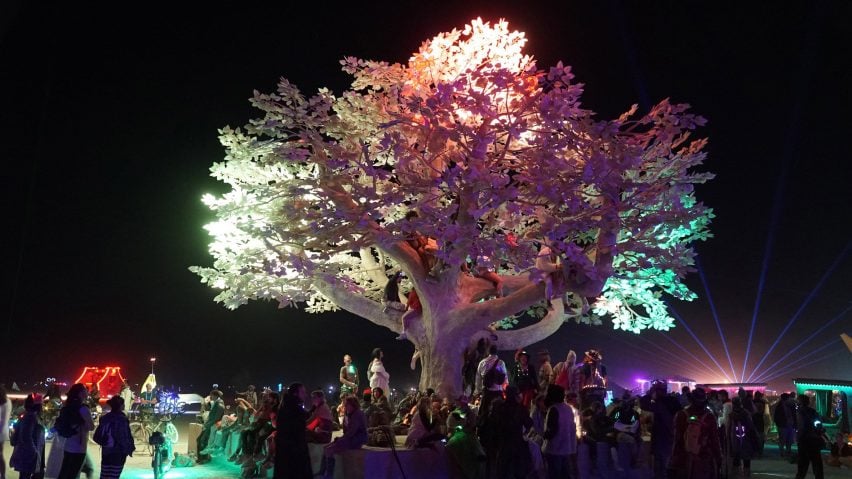
Tree of Ténéré responds to Burning Man attendees with light patterns
The leaves of an artificial tree at this year's Burning Man festival illuminated with "light flocks" in response to visitors' movements, heart beats and brain activity.

A team from New York, San Francisco and Amsterdam – led by artist Zachary Smith and including Dutch designers Studio Drift – created the Tree of Ténéré for the event, which took place in Nevada's Black Rock Desert last week.
The project is named after an acacia tree that once grew 400 kilometres from any other tree in the Sahara Desert, which was used as a marker on caravan routes but allegedly mowed down by a drunk driver in 1973.
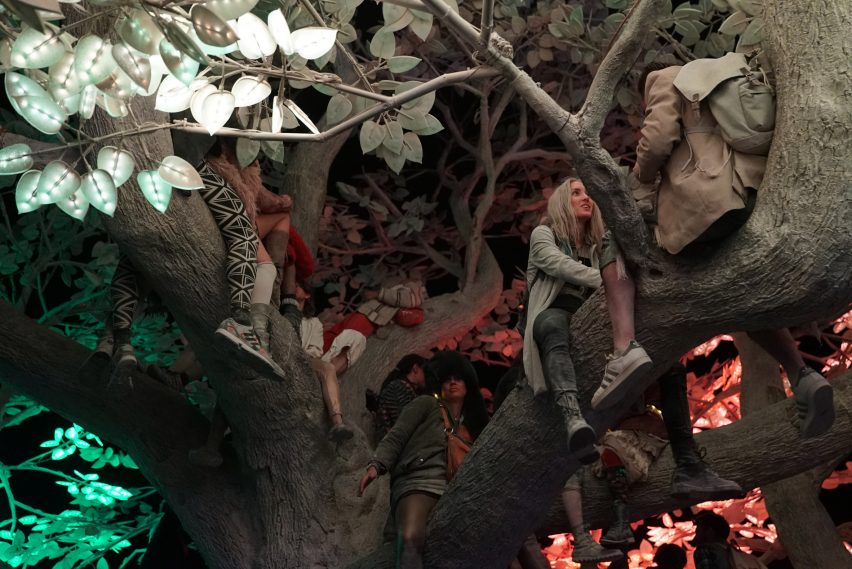
"It used to be one of the strongest symbols of life, a lonely tree, finding a way to flourish in the most difficult environment," said Studio Drift.
The team decided to reincarnate the tree in a similarly arid environment as an interactive installation. For the project, Studio Drift adapted its Flylight technology, which uses an algorithm to make thousands of multicoloured LEDs react like flocks of birds.
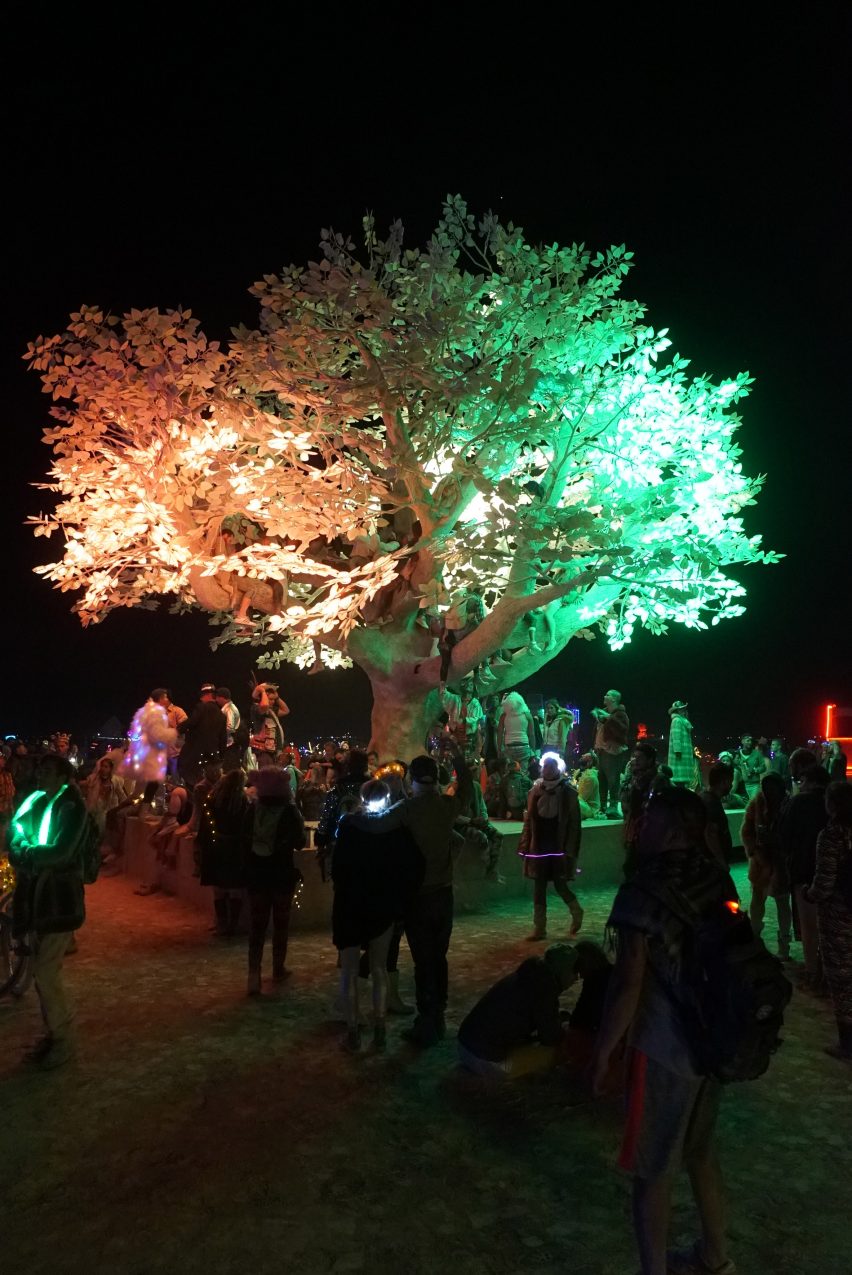
Three participants donned headsets that measured their movements, heart beats and brain activity. The algorithm translates this data into patterns that are visualised across the leaves of the artificial trees, which each held seven different coloured LEDs – totalling 175,000 all together.
"Their movements, heart beats and brain activity are measured and translated into the light swarms," said the studio. "Once the people sync their movements, the individual flocks merge into one large swarm of light."
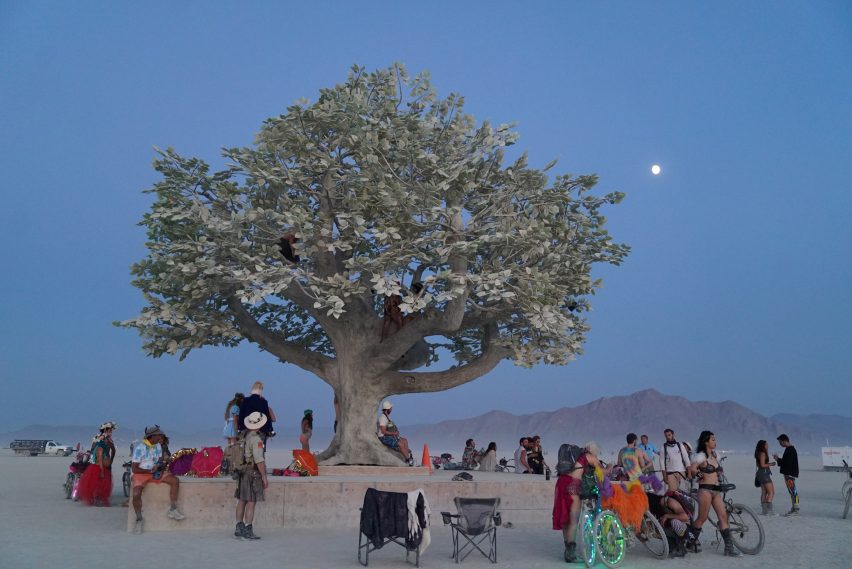
Studio Drift's founders Lonneke Gordijn and Ralph Nauta first developed the technology for an installation in 2007, and repurposed it this year to celebrate their 10th anniversary.
The studio is known for its kinetic artworks, from an installation of thin glass bars that move like wings to a giant concrete-like cuboid that seemingly defies gravity.
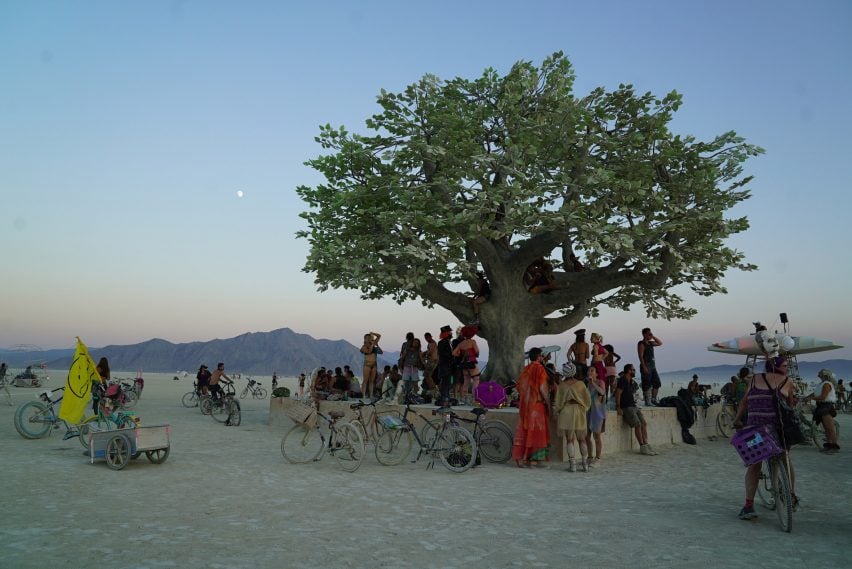
Burning Man 2017 took place from 27 August to 4 September, when 68,000 revellers travelled to the desert and built a temporary city. The annual event was started on a California beach in 1986 by Larry Harvey, who later moved it to Nevada as it grew in scale.
In a 2015 interview, he told Dezeen about the "stunning achievement" of creating a high-density, car-free festival in a remote and inhospitable landscape.